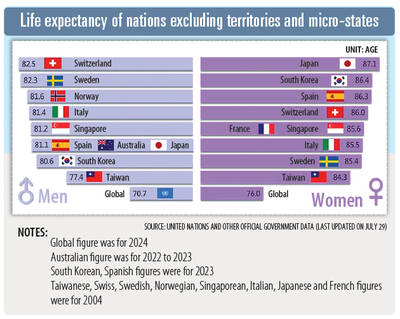An inter-disciplinary research team recently announced a breakthrough it made in intracellular gene manipulation thanks to the utilization of its Artificial Targeting Light Activated Nano Scissors (ATLANS).
The Small Medicine and Advanced Research Translation team led by National Cheng Kung University Medical College’s Institute of Oral Medicine made a breakthrough in the precision in-cell gene scission at specific sequence sites using their ATLANS and a custom-built photonic device.
The research was supported by the National Nano Science and Technology Program, which is funded by National Science Council (NSC). The results were recently accepted by the international -journal Biomaterials, and a patent application is being processed.
According to team leader Shieh Dar-bin (謝達斌), the nano-enabled technology recognizes, captures and performs double-strand cuts of a desired DNA sequence in a similar fashion to restriction endonuclease, but the new process is completely artificial and controlled by specific photon energy.
As part of the research, the team was able to successfully shut down the drug resistant gene STAT3 in cancer cells using the ATLANS, which is promising for future gene therapies aimed at cancer, he said.
National Cheng Kung University president Michael Lai (賴明詔) said that modifying a cell’s genes to treat a disease poses many technical difficulties.
“In the past, even though we could enter cells to destroy genes with a virus or drugs, we could not control the genes properly,” he said. “The ATLANS developed by the research team led by professor Shieh is an innovative method which can target specific genes in the cells and make modifications, thus it is a very significant breakthrough in clinical research technology.”
Shieh said that many ailments, such as cancer or genetic diseases, are caused by gene mutations, adding that cancer cells and infectious pathogens may develop a resistance to drugs through the activation of certain genes.
“Therefore, one of the major values of the Artificial Targeting Light Activated Nano Scissor is its ability to identify the target genes in the nucleus and optically-control the precise genetic cuts to block its pathogenic functions, thus constituting an effective treatment,” he said.
The ATLANS is an innovative technique and it is also the first time this method has been applied for intracellular gene manipulation, Shieh said.
“This technology uses nanoparticles as a quencher to protect the cutting device from non-specific activation at the wrong sequence site and also protect the entire TFO layer from being disrupted by the body before reaching the final destination,” he said. “Once the genetic targets are locked on, the ATLANS is activated and the proximity of the photo-cutter is no longer restricted by the particle surface plasma. This precise and accurate, dynamic molecular control is required to execute gene cutting at the atomic level, hence molecular ‘Nano Scissors.’”
With the ATLANS technology, the research team also developed a GeneErasor optical system, which functions to “erase” specific targeted genes in a specific cell. The gene eraser is expected to undergo testing early next year, Shieh said.
Shieh added that the GeneErasor system is currently based on the blue light band, but the team has successfully tested a second-generation system that uses near-infrared laser-scan activation and performs better tissue penetration for diseases in deep organ system.
Su Wu-chou (蘇五洲), a professor at National Cheng Kung University’s medical school, said all cancers arise from genetic mutations and that the ATLANS’ application to cancer treatment was initially focused on late stage cancers.
“We still need to put in more effort to package the ATLANS for effective tumor-targeting when entering the human body. ATLANS-based therapy to modify tumor sensitivity to anti-cancer drugs and improve early disease intervention is still a challenge that has yet to be confronted,” he said.

Eight restaurants in Taiwan yesterday secured a one-star rating from the Michelin Guide Taiwan for the first time, while three one-star restaurants from last year’s edition were promoted to two stars. Forty-three restaurants were awarded one star this year, including 34 in Taipei, five in Taichung and four in Kaohsiung. Hosu (好嶼), Chuan Ya (川雅), Sushi Kajin (鮨嘉仁), aMaze (心宴), La Vie by Thomas Buhner, Yuan Yi (元一) and Frassi in Taipei and Front House (方蒔) in Kaohsiung received a one-star rating for the first time. Hosu is known for innovative Taiwanese dishes, while Chuan Ya serves Sichuan cuisine and aMaze specializes

STATS: Taiwan’s average life expectancy of 80.77 years was lower than that of Japan, Singapore and South Korea, but higher than in China, Malaysia and Indonesia Taiwan’s average life expectancy last year increased to 80.77 years, but was still not back to its pre-COVID-19 pandemic peak of 81.32 years in 2020, the Ministry of the Interior said yesterday. The average life expectancy last year increased the 0.54 years from 2023, the ministry said in a statement. For men and women, the average life expectancy last year was 77.42 years and 84.30 years respectively, up 0.48 years and 0.56 years from the previous year. Taiwan’s average life expectancy peaked at 81.32 years in 2020, as the nation was relatively unaffected by the pandemic that year. The metric

Taiwan High Speed Rail Corp. (THSRC) plans to ease strained capacity during peak hours by introducing new fare rules restricting passengers traveling without reserved seats in 2026, company Chairman Shih Che (史哲) said Wednesday. THSRC needs to tackle its capacity issue because there have been several occasions where passengers holding tickets with reserved seats did not make it onto their train in stations packed with individuals traveling without a reserved seat, Shih told reporters in a joint interview in Taipei. Non-reserved seats allow travelers maximum flexibility, but it has led to issues relating to quality of service and safety concerns, especially during

A magnitude 5.1 earthquake struck Chiayi County at 4:37pm today, the Central Weather Administration (CWA) said. The hypocenter was 36.3km southeast of Chiayi County Hall at a depth of 10.4km, CWA data showed. There were no immediate reports of damage resulting from the quake. The intensity of the quake, which gauges the actual effect of a seismic event, measured 4 in Chiayi County, Tainan and Kaohsiung on Taiwan's seven-tier intensity scale, the data showed. The quake had an intensity of 3 in Chiayi City and Yunlin County, while it was measured as 2 in Pingtung, Taitung, Hualien, Changhua, Nantou and Penghu counties, the data